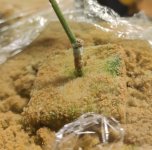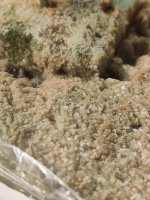at first i'm sorry for starting a new thread because of my problem. i'm too lazy to try to find this exact same problem from other threads. i tried it but i just got annoying stress. i think now it's better to ask from people who know more.
so i guess this is some kind of mold. i have never seen it before and that's why i am here. i will get rid of these clones but how to prevent this in the future?
next step is to clean the cloning area with a bleach mixture (5-10%). and second step is to cover top of rockwools.
but what else? should i buy h2o2? or is bleach enough? should i spray my mother plants with something? hmm..?
so i guess this is some kind of mold. i have never seen it before and that's why i am here. i will get rid of these clones but how to prevent this in the future?
next step is to clean the cloning area with a bleach mixture (5-10%). and second step is to cover top of rockwools.
but what else? should i buy h2o2? or is bleach enough? should i spray my mother plants with something? hmm..?




